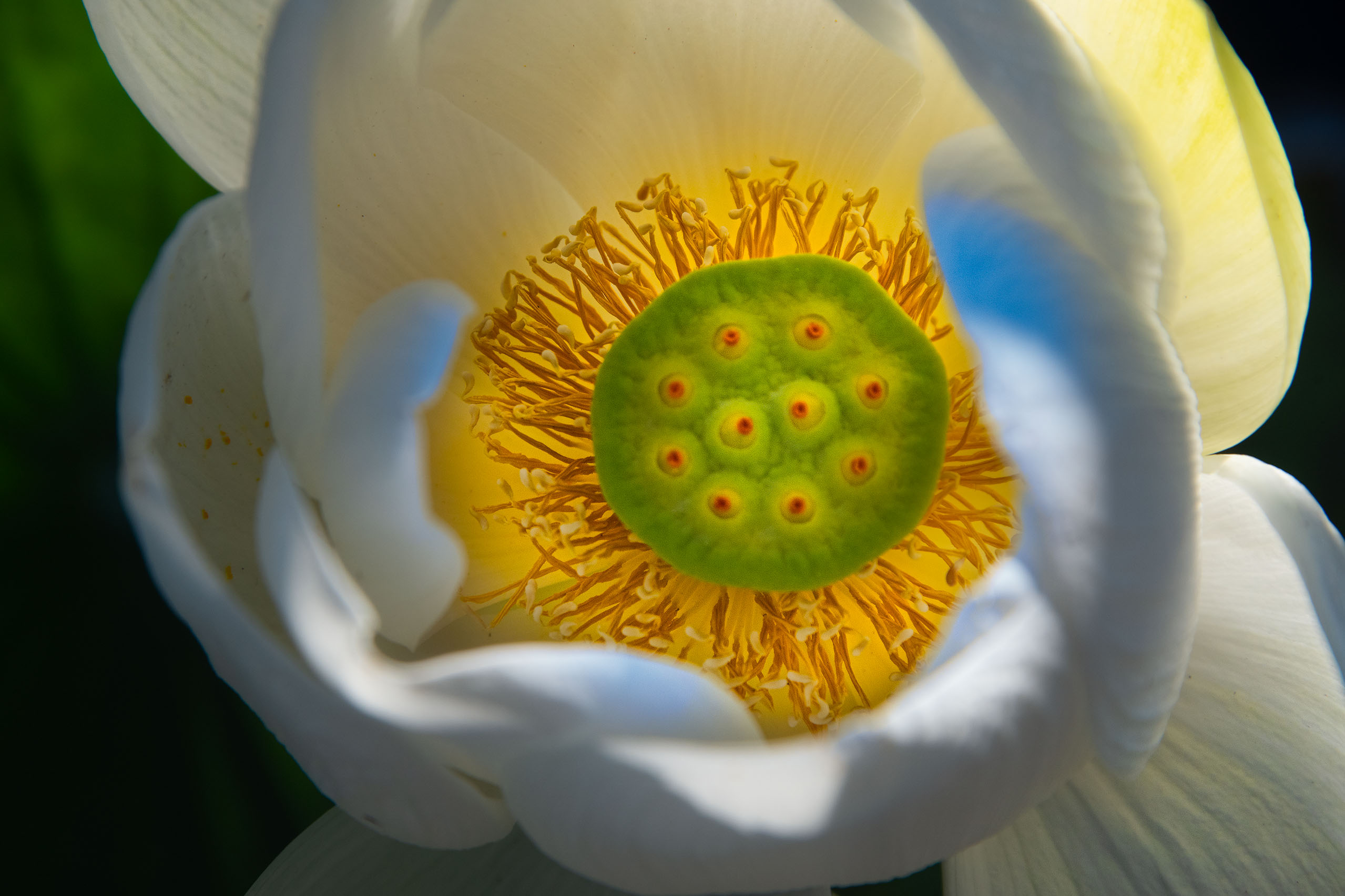This photograph shows the Carpellary receptacle of a Lotus flower, Nelumbo nucifera. The Lotus is a sacred flower in both Hinduism and Buddhism. I photographed this Lotus in a small lily pond at the Chicago Botanic Garden.

The round, flat-topped green structure in the center of the flower is called the Carpellary receptacle. The tiny red bumps on the surface of the Carpellary receptacle are female stigmas that each contain an ovule.
These ovules will be fertilized by the male anthers, shown in my photo surrounding the Carpellary receptacle, and after fertilization the ovules will turn into seeds. As the process progresses, the Carpellary platform will start to tilt, and the seeds will fall into the water surrounding the Lotus.
Many of the seeds will be eaten for food—the Lotus is an important food crop in China, often planted alongside rice, and all parts of the plant are edible—but those seeds that survive will eventually become new plants.
An astounding thing about the Lotus is how long the seeds can survive and still be viable, in some documented cases over 1,000 years. That’s why the Lotus has become a symbol of longevity.